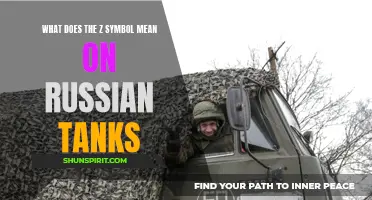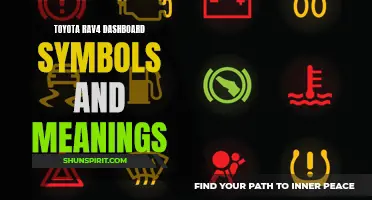
The world of welding can be complex and intricate, with a myriad of techniques, equipment, and terminology to navigate. One crucial element in understanding this field is the weld symbol chart. This chart serves as a visual guide, outlining the various symbols used to represent different types of welds and their corresponding meanings. By decoding these symbols, welders can effectively communicate and execute their work, ensuring precision and accuracy in the welding process. In this guide, we will explore the weld symbol chart and its significance, shedding light on the language of welding and the key information it provides. Whether you're a seasoned welder or an aspiring one, understanding the weld symbol chart is essential for success in this fascinating and vital trade.
What You'll Learn
- What is a weld symbol chart and why is it important?
- What are the different elements typically found in a weld symbol chart?
- How can a weld symbol chart be used to determine the type and size of a weld?
- What are some common weld symbols and their meanings?
- Are there any industry standards or guidelines for interpreting weld symbols on a chart?

What is a weld symbol chart and why is it important?
A weld symbol chart is a reference guide that displays various symbols used in welding to represent different types of welds. It provides a visual representation of different welds and their specific characteristics. This chart is an essential tool for welders as it allows them to understand and interpret the welding symbols used in engineering drawings and blueprints.
Weld symbols are used to communicate important information about a weld joint, such as the type of weld, its size, and other specifications. They are commonly used in industries such as manufacturing, construction, and fabrication, where welding is a critical process for joining metals together.
The weld symbol chart typically includes a variety of symbols, each representing a specific type of weld. These symbols are standardized and follow specific guidelines set by organizations such as the American Welding Society (AWS) and the International Organization for Standardization (ISO). The chart will often include symbols for common welding techniques, such as fillet welds, groove welds, plug welds, and spot welds.
Understanding and correctly interpreting these symbols is crucial for welders as it allows them to ensure the welded joints meet the required specifications. For example, the symbol for a fillet weld will indicate the size and length of the weld, as well as any additional specifications such as the type of groove or joint preparation required. This information is vital for welders to ensure they perform the correct weld to meet the structural and functional requirements of the project.
Additionally, the weld symbol chart also provides information on welding processes, materials, and other relevant details. For instance, it may include symbols for specific welding processes such as shielded metal arc welding (SMAW), gas tungsten arc welding (GTAW), or gas metal arc welding (GMAW). These symbols help welders determine the appropriate welding method for a given joint.
Using the chart as a reference guide, welders can easily identify the required weld type and specifications, ensuring they produce high-quality welds that meet the necessary standards and requirements. Additionally, the chart also serves as a common language for engineers, designers, and fabricators to communicate their welding requirements effectively.
In conclusion, a weld symbol chart is an important tool for welders, engineers, and fabricators. It provides a standardized way of communicating important information about weld joints, ensuring that the correct welds are performed and that the final product meets the required specifications. By understanding and using the symbols correctly, welders can ensure the integrity and quality of their welds, contributing to the overall success of the project.
Decoding the Ford Dashboard Symbols: Understanding Their Meanings for a Safer Drive
You may want to see also

What are the different elements typically found in a weld symbol chart?
A weld symbol chart is a graphical representation of various welding symbols used to communicate specific details about a weld joint. This chart is an essential tool for welders, engineers, and inspectors involved in the welding process. It provides valuable information about the type of weld joint, welding processes, and other relevant details.
Here are the different elements commonly found in a weld symbol chart:
- Weld Symbol: The weld symbol is the central component of the chart and represents the shape and dimensions of the weld joint. It consists of various lines, arrows, and symbols to convey specific information about the weld.
- Arrow: The arrow on the weld symbol indicates the location and direction of the weld. The arrow points towards the joint, indicating where the weld should be performed.
- Reference Line: The reference line is a horizontal line drawn through the center of the arrow. It serves as a reference point for the other elements of the weld symbol.
- Welding Process Designator: This is a code or abbreviation that represents the welding process to be used. Common welding processes include shielded metal arc welding (SMAW), gas tungsten arc welding (GTAW), gas metal arc welding (GMAW), and flux-cored arc welding (FCAW).
- Size and Length: The size and length of the weld are denoted by specific symbols placed alongside the reference line. These symbols indicate the required dimensions and specifications of the weld.
- Groove and Fillet Welds: The weld symbol chart includes symbols for different types of welds, such as groove welds and fillet welds. Groove welds are used to join two metal plates along their edges, while fillet welds are used to join two metal surfaces at a right angle.
- Depth of Penetration: In some cases, the weld symbol chart may include symbols to indicate the desired depth of penetration. This information is crucial for ensuring the strength and integrity of the weld joint.
- Supplementary Symbols: Supplementary symbols are additional symbols used to provide further details about the weld joint. These symbols may indicate the use of backing bars, the need for preheating, or any other special requirements.
- Process Specific Symbols: Depending on the welding process being used, the chart may include process-specific symbols. For example, symbols for spot welding, seam welding, or resistance welding may be included.
- Welding Positions: The chart may also present symbols representing various welding positions. These symbols indicate how the weld joint should be oriented relative to the welder, such as flat position, horizontal position, vertical position, or overhead position.
By understanding and interpreting the various elements in a weld symbol chart, welders and other professionals can accurately communicate and execute the necessary welds. This ensures that weld joints meet the required specifications, resulting in structurally sound and reliable weldments.
Exploring the Deep Symbolism of Woman: Unraveling the Meanings of Strength and Courage
You may want to see also

How can a weld symbol chart be used to determine the type and size of a weld?
A weld symbol chart is a valuable tool that helps in determining the type and size of a weld. These charts are used in industries such as construction, manufacturing, and engineering, where welding is a common practice. They provide a standardized way of communicating the desired weld to welders and inspectors.
One of the main uses of a weld symbol chart is for identifying the type of weld required. The chart contains various symbols that represent different types of welds, such as fillet welds, groove welds, plug welds, and slot welds. Each symbol has a specific shape and configuration that represents the desired weld. For example, a fillet weld symbol resembles a triangle, while a groove weld symbol resembles a square or rectangle.
In addition to the type of weld, a weld symbol chart is also used to determine the size of the weld. The chart includes dimensions that indicate the required width and depth of the weld. These dimensions are usually specified in fractions of an inch or in millimeters. By referring to the chart, welders can easily determine the size of the weld and ensure that it meets the required specifications.
Furthermore, a weld symbol chart provides information about other important details of the weld, such as the welding process, electrode type, and welding position. These details are represented by additional symbols and annotations on the chart. For instance, a symbol for a specific welding process, such as shielded metal arc welding (SMAW) or gas tungsten arc welding (GTAW), may be included to indicate the preferred method of welding.
Using a weld symbol chart is essential for maintaining consistency and accuracy in welding operations. It helps in eliminating misunderstandings and misinterpretations among welders, inspectors, and engineers. By following the symbols and dimensions specified in the chart, welders can ensure that the welds are performed correctly and meet the required standards. Inspectors can also refer to the chart to verify the quality and compliance of the welds.
In conclusion, a weld symbol chart is a valuable tool for determining the type and size of a weld. It provides a standardized way of communicating welding requirements and eliminates ambiguity and confusion. By using a weld symbol chart, welders can accurately perform the required welds, and inspectors can verify the quality and compliance of the welds.
The Hidden Meanings Behind Latin Symbols: Unraveling the Secrets of Ancient Iconography
You may want to see also

What are some common weld symbols and their meanings?
Welding is a common and important process used to join two pieces of metal together. It requires skill and precision to ensure a strong and durable weld. One aspect of welding that is crucial to understand is the use of weld symbols.
Weld symbols are used to communicate important information about the weld to the welder and anyone else involved in the welding process. They can indicate the type of weld, the weld size, and any special instructions or requirements. By understanding these symbols, welders can ensure they are creating the correct type and quality of weld.
There are several common weld symbols that are used in the welding industry. Here are a few of the most common ones and their meanings:
- Fillet Weld Symbol: The fillet weld symbol is represented by a triangular line and is used to indicate a weld that is made on the surface of a joint where two pieces of metal meet at a 90-degree angle. The size of the fillet weld is usually indicated next to the symbol.
- Groove Weld Symbol: The groove weld symbol is represented by a V-shaped line and is used to indicate a weld made in the groove between two pieces of metal. The specific details, such as the type of groove and the weld size, are usually indicated next to the symbol.
- Plug Weld Symbol: The plug weld symbol is represented by a circle and is used to indicate a weld made through a hole in one of the pieces being joined. The size and number of plug welds are usually indicated next to the symbol.
- Spot Weld Symbol: The spot weld symbol is represented by a series of small circles arranged in a grid pattern and is used to indicate a weld made by pressing two pieces of metal together at specific points. The size and number of spot welds are usually indicated next to the symbol.
- Seam Weld Symbol: The seam weld symbol is represented by a straight line with a series of short perpendicular lines intersecting it and is used to indicate a weld made along the length of a joint. The size and length of the seam weld are usually indicated next to the symbol.
These are just a few examples of the many weld symbols used in the welding industry. It is important for welders to familiarize themselves with these symbols and their meanings to ensure they are creating high-quality welds that meet the required specifications. When reading a welding blueprint or working on a project, welders should carefully review the weld symbols and consult any necessary reference materials to ensure they understand the specific requirements for each weld.
In conclusion, weld symbols are an important aspect of the welding process. They provide crucial information about the type and quality of a weld, as well as any special instructions or requirements. By understanding these symbols and their meanings, welders can ensure they are creating strong and durable welds that meet the necessary specifications.
The Hidden Symbolism Behind the Mercedes Benz Logo Revealed
You may want to see also

Are there any industry standards or guidelines for interpreting weld symbols on a chart?
When it comes to interpreting weld symbols on a chart, there are indeed industry standards and guidelines to follow. These standards and guidelines ensure that weld symbols are interpreted consistently across different organizations and projects. Understanding weld symbols is crucial for welders, inspectors, engineers, and other professionals in the welding industry.
One of the primary standards for interpreting weld symbols is the AWS A2.4:2012 Standard Symbols for Welding, Brazing, and Nondestructive Examination. This standard, published by the American Welding Society (AWS), provides a comprehensive guide to the interpretation of weld symbols. It covers various types of joints, welding processes, and other important elements related to weld symbols.
The AWS A2.4 standard defines symbols for various features such as weld types, groove details, supplementary symbols, and other special symbols. It also provides guidelines for the size, location, and other specifications related to the symbols. By following this standard, professionals in the welding industry can ensure clear and effective communication about weld requirements.
Another important reference for interpreting weld symbols is the ISO 2553:2019 Welding and Allied Processes - Symbolic Representation on Drawings standard. This international standard provides guidelines for the symbolic representation of welds on technical drawings. It covers both 2D and 3D representations of weld symbols and provides clear instructions on their interpretation.
The ISO 2553 standard includes symbols for different types of welds, groove details, weld dimensions, and other relevant information. It also provides guidelines for the placement of symbols, ensuring consistency and clarity in their interpretation. By following this standard, professionals can communicate weld requirements in a globally recognized format.
In addition to these standards, many organizations and industries may have their own specific guidelines for interpreting weld symbols. These guidelines may be based on the industry standards mentioned above or may be tailored to specific needs and requirements. It's essential for professionals to be aware of any industry-specific guidelines that apply to the projects they are working on.
Overall, interpreting weld symbols on a chart requires following industry standards and guidelines. The AWS A2.4 and ISO 2553 standards are widely accepted as references for weld symbol interpretation. By adhering to these standards, professionals in the welding industry can ensure accurate communication and consistent interpretation of weld requirements.
The Symbolic Meaning Behind Crabs: Understanding Their Significance
You may want to see also
Frequently asked questions
A weld symbol chart is a visual representation of the various types of welds that are commonly used in welding processes. It provides a standardized way to communicate the specifics of a weld joint, including the type of weld, its location, and any additional information that may be relevant.
A weld symbol chart helps to convey important information about a weld joint, such as the type of weld required, the direction and extent of the weld, and any additional specifications that are necessary for the weld to meet the desired criteria. By using standardized symbols and abbreviations, a weld symbol chart ensures that everyone involved in a welding project can understand and interpret the information in a consistent manner.
A weld symbol chart is important because it helps to ensure that welds are performed correctly and meet the necessary specifications. By using standardized symbols and abbreviations, it eliminates confusion and miscommunication, allowing for greater efficiency and accuracy in the welding process. It also serves as a valuable reference tool for welders, inspectors, and other individuals involved in the fabrication and inspection of welded structures.







